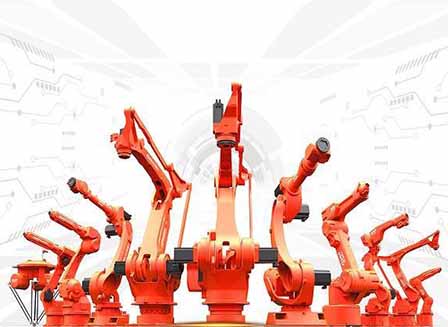
Source: Pixabay
Grab any electronic device near you and give it a good inspection. You will notice how small some parts are, some so small that you will start wondering how they were even made in the first place. Electronic manufacturing is another big industry that is reaping the benefits of using industrial robots.
The consumption of electronic products is rising by the day, and keeping up with the demand is piling a lot of pressure on manufacturers, relying on human labor alone does not cut it anymore. This is the reason why every electronics maker is switching to industrial automation and robotics.
This is a quick look at the processes carried out by industrial robots like SCARA robots and the benefits that they bring to the fold.
Table of Contents
Robotic Applications in Electrical Electronics Manufacturing
Industrial robots are used in different ways in electronics factories; some of the more prominent roles include the following.
Assembly
Putting together electronic parts, some the size of a rice grain is something human hands cannot manage quickly and effectively, but when machines like delta robots are used, the production spikes up due to their high speeds and low inertia.
Delicate parts like circuit boards have thousands of tiny components and wires that can only be put together through robotic assembly systems. These robots are equipped with high-res cameras that can single out an object that is 1/1000th of an inch.
Inspection and Testing
Testing and inspections are standard practices in the electronic industry. Before the product is given the green light, it has to undergo several tests. To save on time and resources, these tests are conducted by robots that have arm-mounted cameras that sweep a product carefully looking for errors.
The cameras use IR-sensors to single out hotspots of failure; anything that fails the test is shoved back into the robot assembly line for rectifications.
Packing
Packaging is another area that used to rely on human workers, but as the demand rose, the need for a faster system has pushed companies towards packaging robot manufacturers. The robots pack the assembled products at very high speeds without leaving a single component outside. Each packaged box contains a set number of products, not more or less, and they are sealed in the process in an identical fashion. You would never be able to tell them apart at the end of the process.
Dispensing
Dispensing refers to the process where electronics products are given a sealant coating to protect them from the elements so they can last much longer. These coatings shield them from degradation, temperature, and vibrations, all of which may affect how they function.
A factory robot arm is used for this process because of its ability to apply a uniform coat without wasting anything. The part-to-part repeatability is vital as it is the only way consistency can be assured.
Quality Control

Increasing the manufacturing speed is one way of pushing the profits up, but most times, this comes at the expense of quality. In the early days of using robots for manufacturing electronics, the volume increased, but the quality dipped. However, as the robots become better, the need for quality control once again becomes a priority.
Care has been taken in to ensure that every product is not only identical but produces the same results over and over again until the process is deliberately altered.
Benefits of Using Robots in Electrical Manufacturing Sector

Automating the manufacturing process does not solve all the problems at once, but it sure does offer some worthy reprieve for foremost companies. The following are the benefits of partnering up with industrial robot suppliers.
Flexibility: Robots offer something many people do not possess, the flexibility to be switched to a new role by a simple change of programming. You cannot find an idle robot on the factory floor; once one task has been wrapped up, it can be easily transferred to another sector that is short of hands.
Multi-Tasking: A single robot can handle assembly, inspection, and dispensing in succession within a span of a few minutes. This level of multi-tasking has never been experienced in the manufacturing world before. Using robots that can multitask saves the cost of running a factory significantly as you will have work meant for three people handled by a single high speed robot arm.
Sophisticated Tasks: As earlier mentioned, electronics use very tiny components in their setups. Some may be too small for the human eye to keep track of. Take tiny transistors on smartphone motherboards; for instance, some are too tiny to even hold by hand. Only an industrial robot designed for this work can manage roles like these.
Conclusion
Electronic companies are gradually phasing out human workers and replacing a huge chunk of them with industrial robots. The efficiency they bring to manufacturing cannot be ignored. The general industrial robotics market is expected to hit $66.48 billion by 2027, which is less than a decade away, proof of how fast the world is moving towards industrial robotic automation.



